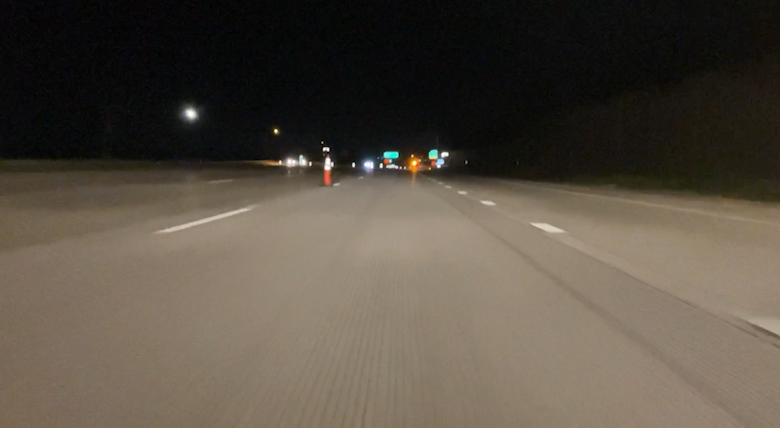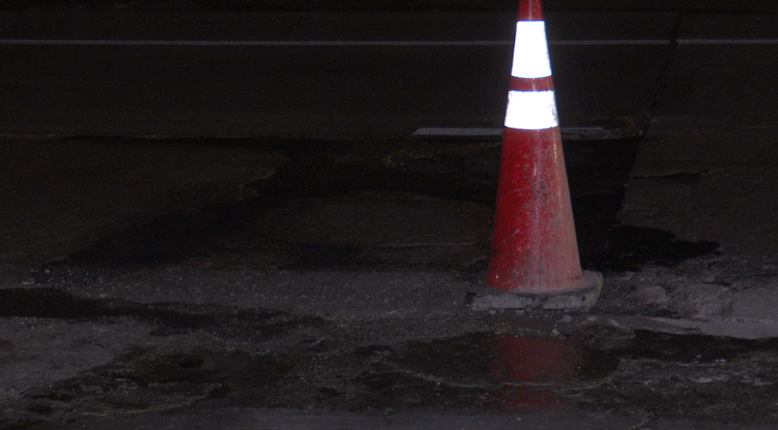Concrete pothole repair work begins on I-25 between Fillmore, Centennial in Colorado Springs
COLORADO SPRINGS, Colo. (KRDO) -- Concrete pavement generally is more durable than asphalt pavement, but it's also more expensive and even it can develop cracks and potholes occasionally.

Overnight Monday, the Colorado Department of Transportation (CDOT) started a project to repair damage in two of three southbound lanes of Interstate 25 between Fillmore Street and Centennial Boulevard.

"This is just south of the other work that we're already doing on I-25," said Eric Meyers, a CDOT operations supervisor. "It's where the pavement changes from asphalt to concrete and there are some problem potholes on the concrete that we need to fix."

A crew of between six to eight people began repairing a larger pothole covering two lanes, and a slightly smaller pothole to the north.

"Those pieces of concrete have heaved a little bit," Meyers explained. "And we've in the past tried to put them together with an asphalt-and-concrete-type of mixture to fill those potholes. At this point, they've heaved and buckled a little bit. So, we're going to go in there and we're going to take out the high spots, and take out that other sealant and put a Fibercrete in there. Fibercrete is really strong and bonds well with the existing concrete that's on the road."

Hours for the overnight work are from 10 p.m. until 5 a.m.; traffic will be reduced to one lane and the speed limit will be lowered to 45 mph.
The project continues through overnight Wednesday but may extend through the end of the week, if necessary.

Similar repairs were recently made to to several large concrete potholes in the northbound lanes of Powers Boulevard, just south of Airport Road; CDOT used a liquid asphalt-like product called Gap-B to repair that damage.

"The Gap-B, we try to use that mostly on asphalt-paved surfaces," Meyers said. "But it does work in emergency situations where we have to fill those holes. And if they are on concrete areas, we try to get that filled in as best as we can. But, in this circumstance, we're going to use the (Fibercrete) on the concrete because we have that product available to us right now. So, we're going to use that to give it more of a permanent fix for that situation."


